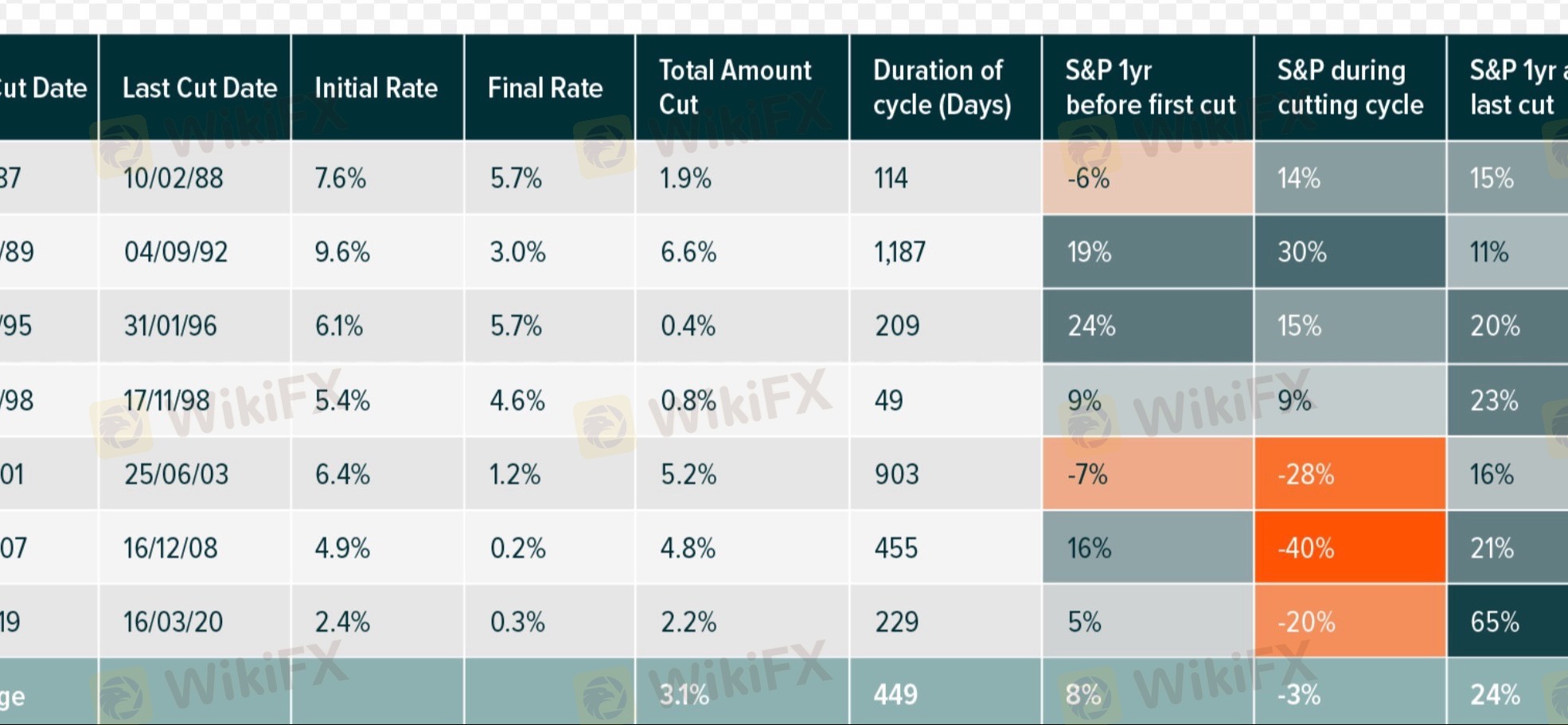
2025-02-21 18:14
ОтраслевойComparing USD trends during different rate cuts be
#FedRateCutAffectsDollarTrend
Comparing U.S. Dollar Trends During Different Fed Rate Cut Cycles
The impact of Fed rate cuts on the U.S. dollar varies depending on the economic conditions surrounding each easing cycle. Some cycles saw an immediate dollar decline, while others resulted in temporary strength before longer-term weakness. Below is a comparison of major rate cut cycles and how the dollar responded.
1. 2001-2003: Dot-Com Bubble & Post-9/11 Recession
Rate Cuts: The Fed cut rates aggressively from 6.5% in 2000 to 1.0% by 2003.
USD Trend: Significant weakening (-33% vs. the euro from 2002-2004)
• The Fed eased policy aggressively to prevent recession, leading to capital outflows.
• The stock market crash and economic uncertainty weakened the dollar.
• The euro surged as investors shifted to foreign markets.
2. 2007-2009: Global Financial Crisis
Rate Cuts: The Fed slashed rates from 5.25% in 2007 to 0-0.25% by 2008.
USD Trend: Initial strength, then weakness
• The dollar initially strengthened (2008) due to a flight to safety as investors fled to U.S. Treasuries.
• After the crisis stabilized (2009-2011), the dollar weakened as QE flooded markets with liquidity.
• Emerging markets and risk assets outperformed the dollar post-crisis.
3. 2019-2020: Pre-COVID Precautionary Cuts & Pandemic Response
Rate Cuts:
• 2019: The Fed cut rates three times (from 2.5% to 1.75%) as a precautionary measure.
• 2020: The Fed cut rates from 1.75% to near zero in March 2020 due to COVID-19.
USD Trend: Mixed—initial strength, then sharp decline
• The dollar stayed strong in 2019 because global economic uncertainty drove investors into U.S. assets.
• In early 2020, the dollar spiked during the COVID crash, then weakened as the Fed flooded the market with liquidity and QE.
• The DXY fell ~10% in late 2020 as risk appetite returned.
Key Takeaways: How the Dollar Reacts to Rate Cuts
Rate Cut Cycle Initial USD Reaction Long-Term USD Trend Key Factors
2001-2003 Weakened Continued weakening U.S. recession, capital outflows
2007-2009 Strengthened Weakened after crisis stabilized Safe-haven demand → liquidity expansion
**
Нравится 0
FX6276045692
Трейдер
Популярные обсуждения
Технический показатель
Розыгрыш Xiaomi Redmi Note 9 и 20-и VIP-подписок
Технический показатель
ВЫСКАЗЫВАНИЯ БАЙДЕНА ДАВЯТ НА ВАЛЮТЫ РАЗВИВАЮЩИХСЯ СТРАН
Технический показатель
Европа заключила совместный контракт на поставку ремдесивира для лечения COVID-19...
Технический показатель
Индия: Решение Резерв. Банка Индии по проц. ставке, 4%, ожидалось 4%...
Анализ котировок
Китай: Индекс деловой актив. в сф. услуг Caixin PMI, Сентябрь, 54,8 п.
Технический показатель
События предстоящего дня: "АЛРОСА" опубликует результаты продаж за сентябрь...
Классификация рынка

Платфоома

Выставка

Агент

Вакансии

EA

Отраслевой

Котировки

Показатель
Comparing USD trends during different rate cuts be
 Индия | 2025-02-21 18:14
Индия | 2025-02-21 18:14#FedRateCutAffectsDollarTrend
Comparing U.S. Dollar Trends During Different Fed Rate Cut Cycles
The impact of Fed rate cuts on the U.S. dollar varies depending on the economic conditions surrounding each easing cycle. Some cycles saw an immediate dollar decline, while others resulted in temporary strength before longer-term weakness. Below is a comparison of major rate cut cycles and how the dollar responded.
1. 2001-2003: Dot-Com Bubble & Post-9/11 Recession
Rate Cuts: The Fed cut rates aggressively from 6.5% in 2000 to 1.0% by 2003.
USD Trend: Significant weakening (-33% vs. the euro from 2002-2004)
• The Fed eased policy aggressively to prevent recession, leading to capital outflows.
• The stock market crash and economic uncertainty weakened the dollar.
• The euro surged as investors shifted to foreign markets.
2. 2007-2009: Global Financial Crisis
Rate Cuts: The Fed slashed rates from 5.25% in 2007 to 0-0.25% by 2008.
USD Trend: Initial strength, then weakness
• The dollar initially strengthened (2008) due to a flight to safety as investors fled to U.S. Treasuries.
• After the crisis stabilized (2009-2011), the dollar weakened as QE flooded markets with liquidity.
• Emerging markets and risk assets outperformed the dollar post-crisis.
3. 2019-2020: Pre-COVID Precautionary Cuts & Pandemic Response
Rate Cuts:
• 2019: The Fed cut rates three times (from 2.5% to 1.75%) as a precautionary measure.
• 2020: The Fed cut rates from 1.75% to near zero in March 2020 due to COVID-19.
USD Trend: Mixed—initial strength, then sharp decline
• The dollar stayed strong in 2019 because global economic uncertainty drove investors into U.S. assets.
• In early 2020, the dollar spiked during the COVID crash, then weakened as the Fed flooded the market with liquidity and QE.
• The DXY fell ~10% in late 2020 as risk appetite returned.
Key Takeaways: How the Dollar Reacts to Rate Cuts
Rate Cut Cycle Initial USD Reaction Long-Term USD Trend Key Factors
2001-2003 Weakened Continued weakening U.S. recession, capital outflows
2007-2009 Strengthened Weakened after crisis stabilized Safe-haven demand → liquidity expansion
**
Нравится 0
Я тоже хочу высказать замечания.
Задать вопрос
0Комментарии

Пока нет комментариев, оставьте комментарий первым

Задать вопрос
Пока нет комментариев, оставьте комментарий первым